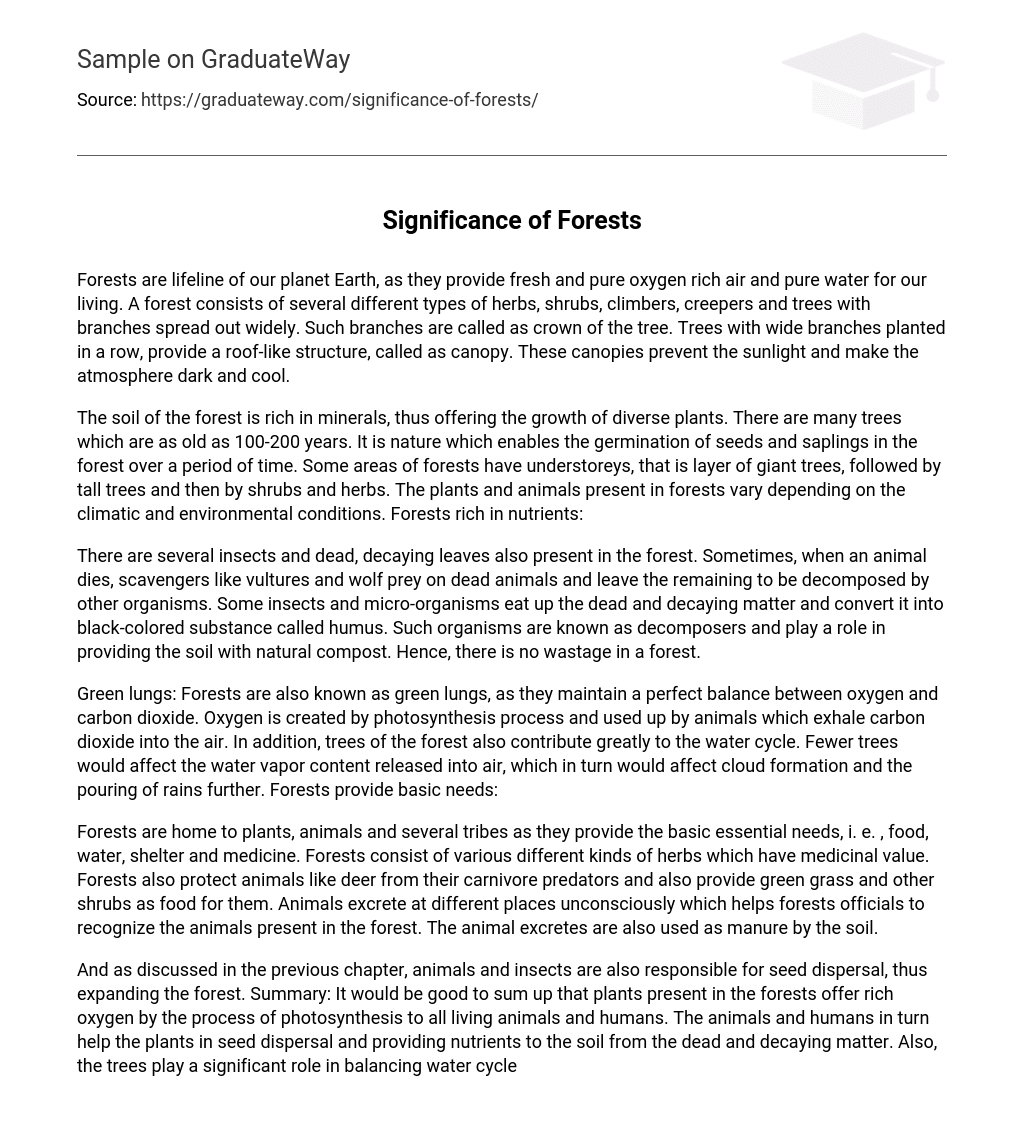Forests play a vital role in the planet’s preservation by providing us with fresh air and water. They contain various types of vegetation such as herbs, shrubs, climbers, creepers, and trees with large branches that form a canopy. This canopy provides shade and a refreshing environment by blocking sunlight.
The forest soil is rich in nutrients, facilitating the growth of various plants. Additionally, there are trees in the forest that have existed for 100-200 years. Over time, natural processes allow seeds and saplings to flourish within the forest. Certain areas of the forest contain understoreys with large trees, as well as tall trees, shrubs, and herbs. The diversity of plants and animals in forests varies depending on their climate and environment. It should be noted that nutrient-rich forests possess ample resources.
In the forest, there are various insects and decaying leaves. If an animal dies, scavengers such as vultures and wolves feed on the carcass while other organisms decompose the remaining. Decomposers, including insects and micro-organisms, transform the dead matter into humus, a black substance. These decomposers serve as natural compost providers, ensuring no wastage in the forest.
Forests, commonly known as green lungs, have a vital role in maintaining the balance between oxygen and carbon dioxide levels. Trees produce oxygen through photosynthesis, while animals consume it and emit carbon dioxide. Additionally, forests play a crucial part in the water cycle by affecting the release of water vapor into the atmosphere, which influences cloud formation and rainfall patterns. Consequently, forests meet essential ecosystem needs.
Forests serve as habitats for plants, animals, and tribes, fulfilling their fundamental necessities such as food, water, shelter, and medicine. Within forests, a variety of medicinal herbs thrive. Additionally, forests offer protection for prey animals like deer by providing them with green grass and other shrubs as sustenance while shielding them from carnivorous predators. The animals unknowingly distribute their excrement throughout the forest, aiding forest officials in identifying the resident fauna. Moreover, these animal excretions serve as natural fertilizers for the soil.
Animals and insects play a role in seed dispersal, contributing to the expansion of the forest. It is important to note that plants in forests produce oxygen through photosynthesis, benefiting all living beings. Similarly, animals and humans aid in seed dispersal and provide nutrients to the soil by decomposing dead matter. Moreover, trees are essential for maintaining the balance of the water cycle. As a result, the forest is a vibrant and thriving “living dynamic entity.”





